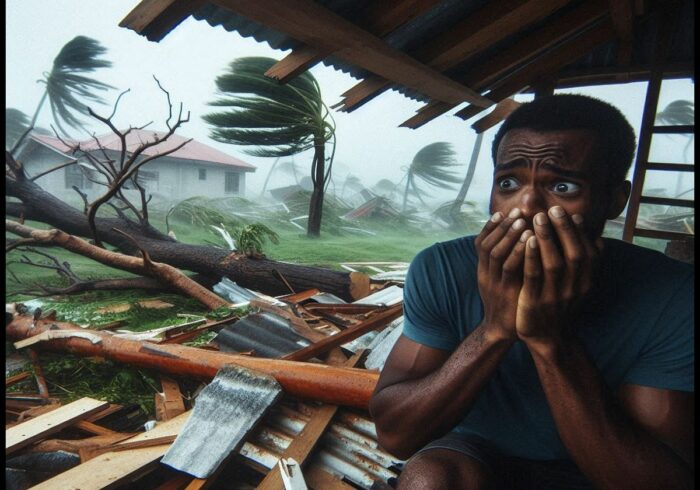
What a typhoon, hurricane and cyclone look like and what’s the difference. Have you ever wondered how these natural phenomena are different? Understanding these terms will help you better understand natural disasters and their impact on our lives. Let’s figure it out!
A typhoon is a dangerous atmospheric phenomenon, albeit a beautiful one. It is a tropical atmospheric vortex that originates in the ocean. It brings with it heavy rains. They are accompanied by showers and sustained winds with a maximum sustained wind speed exceeding 119 km/h near their epicenters.
Typhoon: what it looks like
On land or water, a typhoon feels like a powerful storm with hurricane-force winds. The sky darkens with dark clouds, torrential rain begins. High waves may occur in the sea. You can get a good look at the typhoon from the satellite – it looks like a huge spiral vortex from the clouds. The central part (eye of the typhoon) is usually clear or partly cloudy, surrounded by a dense ring of clouds.
How a typhoon is formed
The formation of a typhoon is a complex process that depends on several factors. In order for an atmospheric vortex to form over water, it is necessary that the water be warm (above 26.5 C). another condition is high humidity. The air above the warm water is saturated with moisture, which contributes to the formation of clouds and precipitation. The atmosphere must have relatively low winds to allow air to rise and form clouds. And the most important thing is the rotation of the Earth. It creates an inertial force known as the Coriolis force. It is capable of twisting atmospheric heights.
First, a small atmospheric fluctuation occurs over the surface of the ocean. Then, in the process of convection, warm moist air rises, forming clouds and releasing heat. This air forms a region of low atmospheric pressure. The Coliolis force forces the air to swirl around this area, forming a small typhoon. Under favorable conditions, the typhoon begins to increase in size: the wind speeds up, and the area of low pressure increases.
What danger is a typhoon?

A typhoon originates on water, but can cause damage on land. Destructive waves and floods destroy the infrastructure of countries and harm agriculture. It takes lives, destroys houses, roads, and damages the country’s economy.
What is the difference between a typhoon and a hurricane?
A hurricane is a wind whose speed exceeds 33 m/s. At a certain time, the clouds may disperse for a short time – the so-called eye of the storm. After a short lull, the strong wind starts again and can rage for dozens of hours.
In fact, a hurricane is the same typhoon, only in the other part of the world.
👉Atmospheric vortices formed in the Atlantic Ocean and the eastern part of the Pacific Ocean are called hurricanes, and typhoons arise in the western part of the Pacific Ocean.
What is the difference between a typhoon and a cyclone?
In meteorology, both hurricane and typhoon are called cyclones.
Cyclone is a more extended concept, which means any atmospheric vortex movement with low pressure in the center.
👉 Cyclone is the name for tropical storms in the Indian Ocean.
Cyclones constantly and naturally appear due to the rotation of the Earth, thanks to the Coriolis force. The passage of the cyclone is associated with the formation of heavy cloud cover and precipitation.
There are two main types of cyclones, extratropical and tropical. Extratropical ones are formed in temperate or polar latitudes and have a diameter of a thousand kilometers at the beginning of development, and up to several thousand in the case of a so-called central cyclone. The second form in tropical latitudes and are smaller in size (hundreds, rarely more than a thousand kilometers), but have large baric gradients and wind speeds reaching storm-force. Tropical cyclones can turn into extratropical cyclones during their development.
Below 8-10° north and south latitude, cyclones occur very rarely, and in the immediate vicinity of the equator they do not occur at all.
Cyclones occur not only in the Earth’s atmosphere, but also in the atmospheres of other planets. For example, the so-called Great Red Spot, which is apparently a long-lasting cyclone, has been observed in Jupiter’s atmosphere for many years. However, cyclones in the atmospheres of other planets have not been sufficiently studied.
What to do during a hurricane?

If a hurricane catches you in the house, move away from the windows and take a safe place near the walls of the interior rooms, in the corridor, near the built-in closets, in bathrooms, toilets, pantries, in strong cabinets, under tables. Extinguish the open fire, turn off the electricity, close the taps on the gas networks. In the dark, use lanterns, lamps, in extreme cases, candles. Turn on the radio to receive information; if possible, stay in deep shelter, in storage rooms, cellars, etc.
If a hurricane finds you on the streets of a populated area, stay as far away as possible from light structures, houses, bridges, overpasses, power lines, masts, trees, rivers, lakes and industrial facilities. Use sheets of plywood, cardboard and plastic boxes, boards, and other materials to protect against flying debris and glass. Try to take cover as soon as possible in basements, cellars and anti-radiation shelters, if such are available in populated areas. Do not enter damaged buildings, as they may collapse with new gusts of wind.
After the departure of the main danger, after the end of the natural phenomenon, it is necessary to find out whether there are no injured people around you, whether someone needs urgent help.